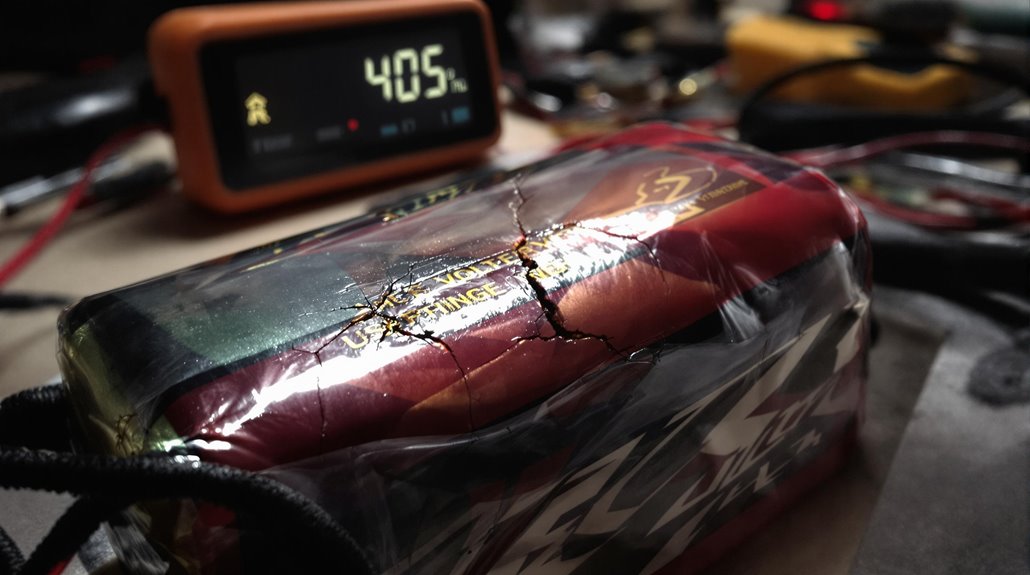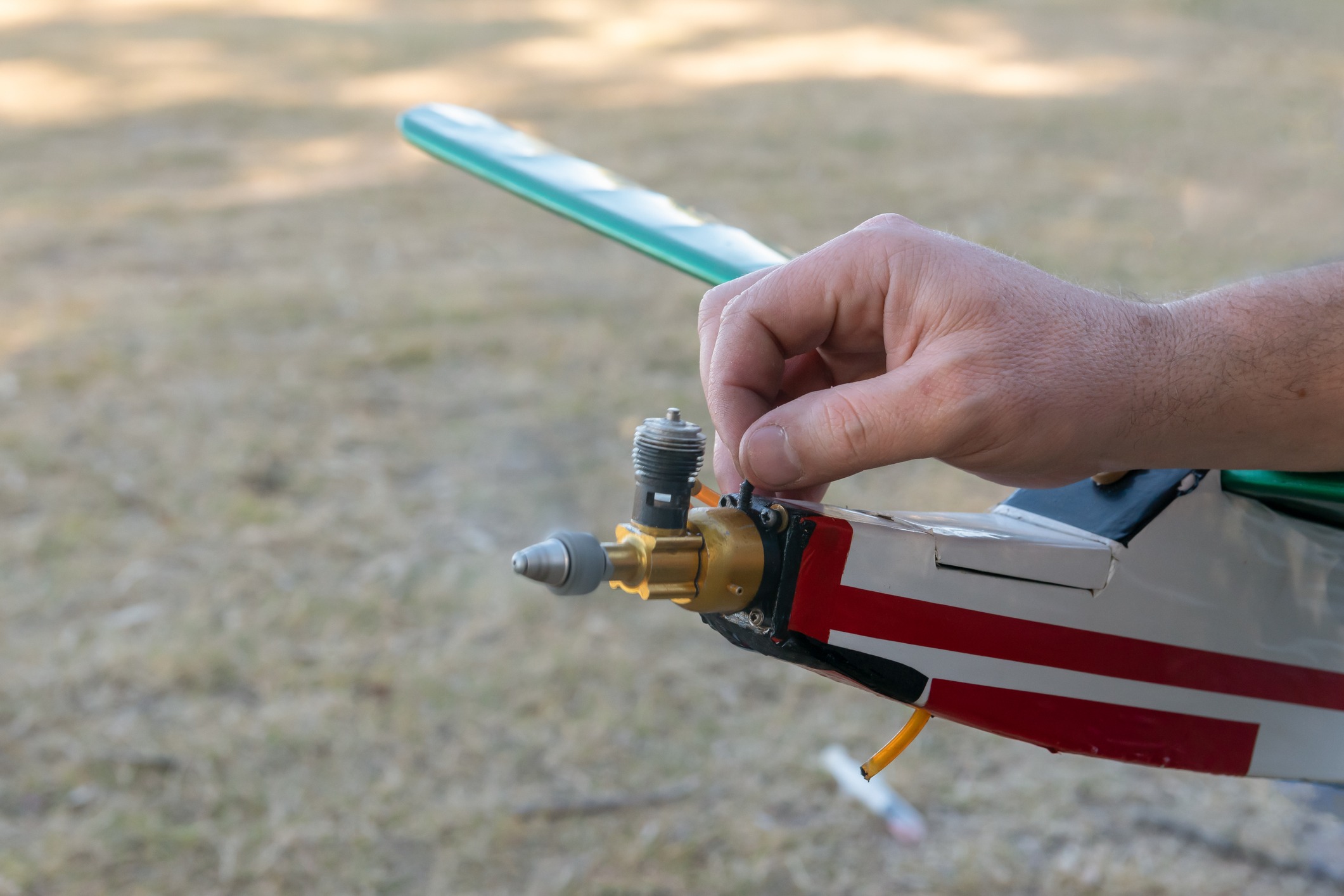Signs You May Have Overcharged Your RC Battery

If you've overcharged your RC battery, watch for several warning signs. Swelling or puffiness is a clear indication of damage, while a misshapen battery poses serious safety risks. Keep an eye out for any smoking or unusual odors, as these are critical signals that demand immediate attention. You might also notice increased internal resistance, which reduces efficiency. Remember to monitor your battery closely during charging and use smart chargers to prevent future overcharging. Understanding these signs can help you protect your equipment and ensure safer operations, and there's more to explore on maintaining your battery health.
Key Takeaways
- Swelling or Puffiness: Look for any signs of swelling, which indicates potential damage from overcharging.
- Misshapen Battery: A misshaped battery poses serious safety risks and requires immediate attention.
- Smoking: If you notice smoke coming from the battery, this is a critical warning sign needing urgent action.
- Fire Hazards: Overcharging can create dangerous fire hazards, so be vigilant for any unusual heat.
- Voltage Levels: Monitor the voltage; if it exceeds 4.2 volts per cell, it may signal overcharging.
Signs of Overcharged Batteries
When it comes to recognizing the signs of overcharged batteries, you should be vigilant about several key indicators. One of the first signs you might notice is swelling or puffiness in the battery. This swelling indicates initial signs of overcharging and potential damage. If you see that your battery is misshapen, don't ignore it; a misshapen battery poses significant safety risks and should be addressed immediately.
Another critical warning sign of overcharging is if your battery starts smoking. This isn't a matter to take lightly; it requires urgent attention. Continued overcharging can escalate into fire hazards, making it essential to monitor your battery's condition during charging.
If you determine that your battery has been damaged due to overcharging, it must be disposed of immediately. Always follow safe disposal procedures to prevent further risks. Remember, keeping a close eye on these signs can help you maintain the safety and longevity of your RC battery. Ignoring these indicators can lead to dangerous situations, so always prioritize your safety and the health of your battery.
Immediate Actions to Take
Detecting overcharging in your RC battery requires immediate action to prevent further damage and ensure safety. First, you need to discharge the battery to 4.19 volts or lower. This step is crucial to mitigate the risks associated with thermal runaway. You can safely discharge the battery by using your RC car or another compatible device, making sure it's done in a controlled environment. While discharging, keep an eye out for any signs of swelling or dimensional changes.
These indicators can help assess ongoing damage and alert you to potential hazards during future charging cycles. Once the battery is adequately discharged, recharge it following the manufacturer's guidelines to avoid the issue of overcharging again. After recharging, store the battery in a safe location for observation.
Make sure it's away from flammable materials, and check it regularly for any safety concerns. Being proactive about monitoring your battery's condition will help you catch any problems early and keep your RC setup running smoothly. Taking these immediate actions can save you from costly damage and ensure the longevity of your battery. Engaging with dedicated hobbyists at RC events can also provide valuable insights into proper battery maintenance and enhance your enjoyment of the hobby.
Safety Precautions for Charging
Charging your RC batteries safely is crucial to prevent overcharging and potential hazards. Always monitor your charging batteries closely. Look out for signs of overcharging, like swelling or unusual heat. It's essential to utilize charging timers or smart chargers that prevent overcharging by ensuring your battery doesn't exceed its safe voltage threshold of 4.2 volts per cell.
While charging, regularly inspect your batteries for any physical changes, such as puffing or deformation. These can indicate potential overcharging and should prompt immediate action. Charge your batteries in well-ventilated areas, avoiding enclosed spaces to reduce fire risks associated with overcharging incidents.
Additionally, maintain a record of your charging cycles and battery conditions. This practice helps you detect patterns that may lead to overcharging in the future. By following these safety precautions, you can significantly reduce the risks associated with charging your RC batteries. Remember, your safety and the longevity of your batteries depend on your diligence during the charging process.
Stay alert, and your RC experience will be much more enjoyable and secure. To minimize risks, remember to avoid flying your RC plane during inclement weather conditions as this can also affect the performance and safety of your equipment.
Quality of Chargers
Choosing the right charger plays a crucial role in maintaining the health and safety of your RC batteries. Investing in a high-quality charger can save you from the risks associated with overcharging your lipo battery. Cheap chargers often lack accurate voltage calibration, which can lead to serious issues. Consider these important features when selecting a charger:
- Accurate voltage calibration to prevent overcharging beyond 4.2 volts per cell
- Balance charging capabilities to equalize cell voltages for better performance
- Smart technology that automatically terminates charging when the battery is full
- Regular calibration reminders to ensure consistent and safe readings
- User-friendly displays that provide clear and accurate voltage readings
When choosing between different types of RC cars, it's essential to understand the 2WD vs. 4WD decision, as it impacts handling and control, which in turn can influence battery consumption and charging needs.
Monitoring Battery Health

Maintaining the health of your RC batteries goes hand in hand with using a quality charger. To ensure your Lipo batteries remain in optimal condition, regularly check the voltage of individual cells. Ideally, they shouldn't differ by more than 0.1 volts; this balance is crucial for overall health. Keep an eye out for physical changes like swelling or puffing, as these signs can indicate overcharging and potential battery damage.
It's also wise to maintain records of your charging cycles and performance assessments. This practice helps you identify trends that might signal declining battery health over time. Additionally, assess the internal resistance (IR) of your batteries periodically. An increase in IR can point to wear and a drop in efficiency.
Using a quality charger with balance charging capabilities plays a key role in maintaining optimal charging conditions. Electric models often have lower ongoing costs as they primarily utilize batteries instead of fuel, which can be a consideration for your budget. By diligently monitoring these factors, you can extend the lifespan of your Lipo batteries and ensure they perform at their best. Remember, proactive monitoring is your best defense against battery deterioration, so make it a regular part of your RC hobby routine.
Safe Disposal Methods
Properly disposing of RC batteries is crucial for safety and environmental protection. If you've overcharged your battery, it's essential to handle it correctly to prevent hazards. Start by ensuring the battery is fully discharged, ideally below 4.19 volts, to minimize risks. Before you dispose of the battery, cover the exposed terminals with tape to prevent short-circuiting during transport.
Here are safe disposal methods you should follow:
- Locate a designated recycling box specifically designed for batteries.
- Contact local recycling centers or professional disposal services for proper guidance.
- Always check local guidelines and regulations regarding hazardous waste.
- Avoid throwing overcharged or damaged batteries in regular trash.
- Consider using protective gear when handling damaged batteries.




